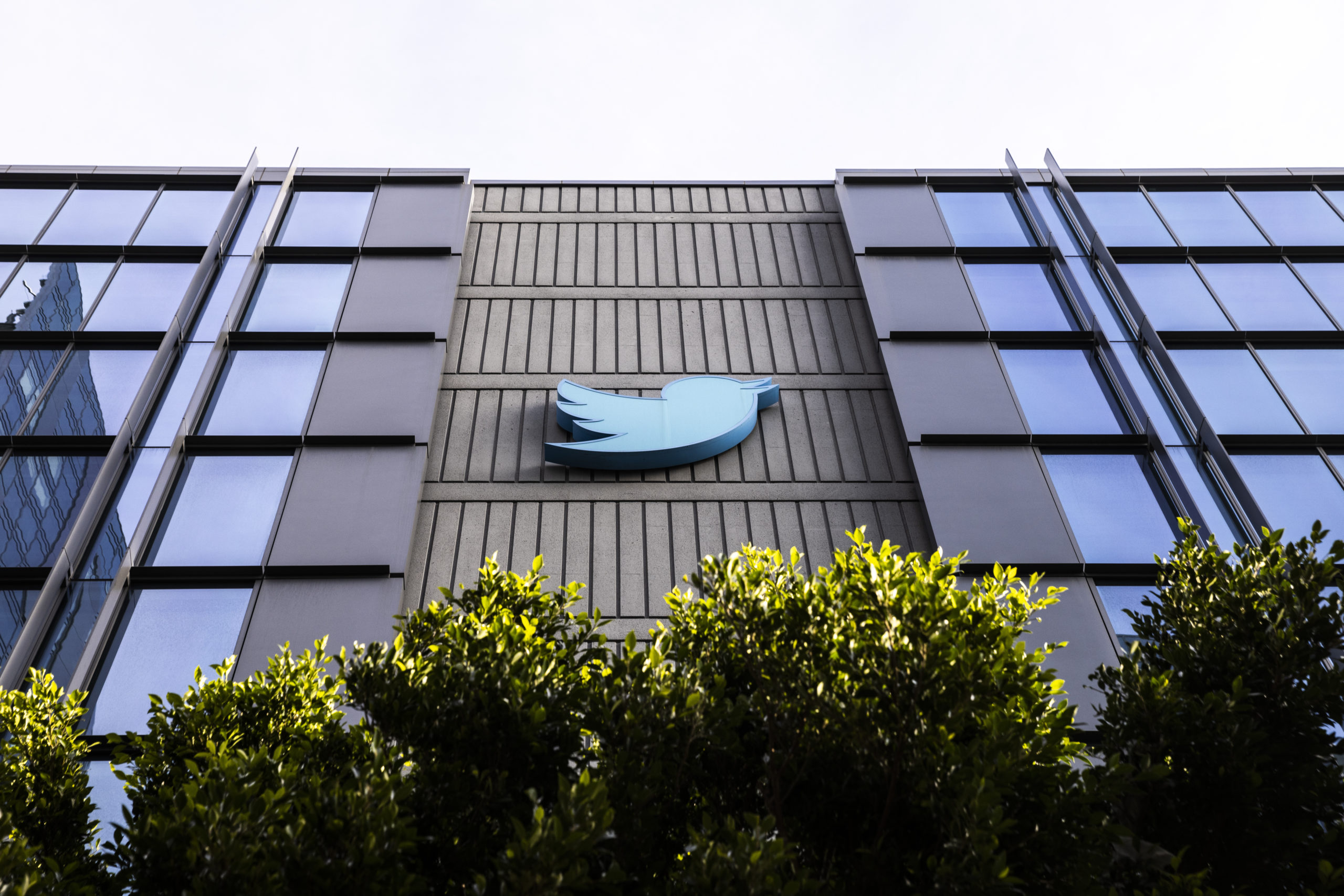
The Twitter logo is seen at the social media company's headquarters in San Francisco on Friday, Nov. 11, 2022. Musk making a mess of Twitter should be the catalyst for journalism to get to work
The news that Elon Musk was actually going through with the purchase of Twitter came as a genuine surprise to me. From the start I somewhat assumed Musk was throwing his money and influence around, hoping to affect change at the company without actually buying it. The prospect of jeopardizing his positions at and influence over SpaceX and Tesla for the bird app seemed almost unimaginable.
Anyone who’s even casually studied Twitter over the years clearly understood the significant challenges the company has been facing.
Twitter has long been in the unfortunate “worst of both worlds” position of having to deal with all of the big challenges of running a platform, like content moderation, safety, policy enforcement, and shipping new products, while simultaneously struggling with slow user growth, low engagement by existing users, and a series of acquisitions, such as Vine and Periscope, that the company failed to utilize as growth engines.
Despite the platform’s failures to successfully monetize and grow at anywhere near the rate of other apps and platforms like Facebook, Instagram, TikTok, or even Snapchat, Twitter, almost by accident, found itself in the position of being the platform for public figures and institutions to disseminate timely and critical information, thanks to the platform’s little blue verification check mark. That checkmark signaled to the world that the post originated from exactly who it appeared to be coming from. While this idea is shockingly straight forward, it was actually quite innovative. When the verification checkmark launched in 2009, it was the first time there was a large scale social and institutional network that featured verified identity. This feature solidified Twitter’s cultural popularity and relevance, which is why I’m so deeply puzzled as to why Twitter’s new owner seems to be devaluing the company’s most valuable asset.
As of writing this, at Musk’s direction, Twitter has made verification available to anyone with a phone, a credit card, and $8 a month, which inherently shreds the utility of verification. No longer can the public reliably look for the coveted blue check to discern the authenticity or provenance of the tweet they are reading. In the hours following the launch of paid verification there have been hundreds of examples of accounts claiming to be celebrities, brands, journalists, politicians, etc. that feature the blue tick. Twitter is quickly working to remove them, but ask anyone who has studied moderation and they’ll tell you this is a flawed and unsustainable approach. The platform suspended its paid verification option on Nov. 11, with Musk tweeting that it would relaunch on Nov. 29 “to make sure that it is rock solid.”
This move is only the first in a long, somewhat disorganized, and often contradictory list of ideas and changes that Musk has expressed that are coming to the platform. One of which is to grow and change the community fact-checking program, Community Notes, formally called Birdwatch. The system works a bit like a mashup between Wikipedia and traditional fact-checking programs, with a smallish group of users having the ability to leave notes on tweets detailing what is factually inaccurate about them. Other “birdwatchers” can endorse the note and detail why it is an important and worthy check on the original post. If a note sees enough traction with other birdwatchers, it is added to the tweet for all of Twitter to see.
Birdwatch has long been admired as a unique and effective means of flagging misinformation or disinformation on the platform. However, Musk is now indicating that the program will be largely expanded to include all many, many, more users, potentially everyone who pays the $8 a month for verification, allowing the Community Notes system to effectively be overrun by partisan or coordinated influence. If this proceeds, publishers are likely to see many more Community Notes attached to their posts that could very well be representative of the most organized viewpoint, as opposed to the most accurate fact-check. Twitter would be wise to look carefully at Wikipedia’s approach to editing which relies heavily on a basic set of tactics such as restricting edits/contributions from accounts that have historically been inaccurate or acted in bad faith paired with automated review tools that can identify malicious behavior. Twitter could also borrow a page from Facebook and partner with fact-checking outfits for the most consequential topic such as government and public health content.
Beyond some of these technical changes, Musk has said the narrative that gets created around breaking news and other events is, in his mind, too heavily defined by a small collection of major publications. He believes that’s “not as good as enabling the people to define the narrative as well” and has repeatedly said he hopes to elevate “citizen journalism” and “Vox Populi, Vox Dei” via the platform but has failed to announce or ship any new features that support this vision. While this idea seems interesting on the surface, we’ve seen again and again that inconvenient or unpopular realities, which journalists rigorously investigate and report on, can be rejected by the public. That rejection, of course, does not magically make the reporting no longer accurate. This idea puts us on a glidepath to a situation where the most popular ideas could replace reporting and reality, at least on Twitter.
There is, of course, a silver lining. While Musk muddles around with how Twitter works (or doesn’t), our industry would be well-served to exploit this disorganization and build value maximizing products that our industry and customers will use. Moments of disruption like this are rare, and our industry has had a horrible track record of seizing on such moments. This is an opportunity to change that. Publishers would be wise to consider ideas around how they could introduce social and newsfeed-like features into their products, build platforms that allow public figures and institutions to communicate directly with the public, or support the creation of a more vibrant Mastodon ecosystem in which a news organization runs a server for their readers and community.
As an industry, journalism has largely ignored getting serious about platforms from a product perspective — digital identity, content economics, and media integrity, all of the most important building blocks of what the future digital native media company is. Musk making a mess of Twitter should be the catalyst our industry to get to work.
Matt Karolian is the General Manager of Boston.com and Platform Partnerships at the Boston Globe, prior to that he was the Director of Audience Engagement. Matt is a member of the 80th class of Nieman Fellows at Harvard.


